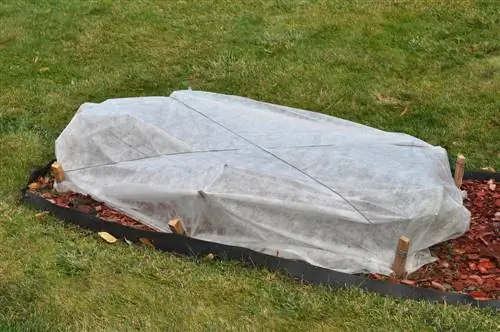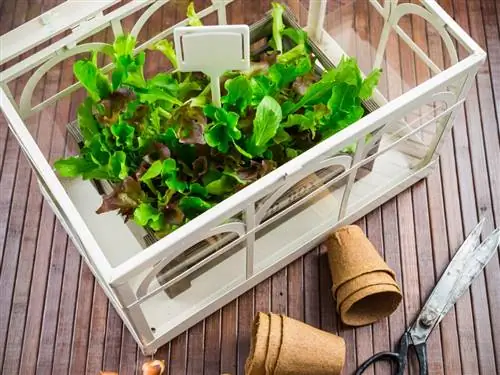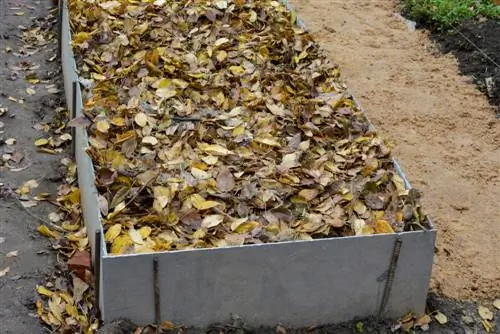- Author admin [email protected].
- Public 2023-12-16 16:46.
- Last modified 2025-01-23 11:22.
Most of the perennials are well hardy. However, you should consider a few aspects and take measures to ensure that your plants survive the cool season without damage. In our article you will learn how to optimally protect the perennials in your garden.

How can I protect my perennials in winter?
To winterize perennials, cover them to protect them from winter sun and evaporation. Use materials such as leaves, brushwood or straw and remove them in good time in spring to prevent fungal infestation and pests.
Is winterization aid even necessary?
As soon as winter comes around, most perennials fall into hibernation. Some species are completely frost-resistant, so they don't necessarily need wintering help.
But: Even hardy perennials can be damaged, namely through thirst. This is a point that hobby gardeners often underestimate.
Perennials must not die of thirst
In general, winter damage to perennials does not primarily result from freezing to death, but from dying of thirst. The power of the winter sun is greater than you would think. You
- dries out the plants,
- makes them “burn” when the ground is frozen and
- creates significant temperature differences between day and night.
All of these influences are not exactly beneficial to the he alth of perennials - quite the opposite. For this reason, we advise you to cover your plants over the winter, regardless of whether they are frost-sensitive specimens. The cover simply serves to provide the perennials with soothing shade.
Which materials can be used for the cover
To protect the roots of perennials, you can, for example,
- Leaves,
- brushwood or
- Straw
use.
Important: Remove the cover in good time - before the perennials sprout again in spring, i.e. in February or early to mid-March at the latest. If you leave the winter protection lying or standing for too long, the increasingly warmer weather will promote dangerous fungal infestation and pests.
Frost-sensitive versus hardy perennials
From what has been said so far it is clear that ultimately all perennials need some winter protection in order to survive the frosty period. However, there is definitely a difference when it comes to dealing with frost-sensitive and winter-hardy perennials.
- Hardy perennials can stay outside in winter.
- You should move frost-sensitive plants to milder winter quarters.
General measures for efficient winter protection
- Stop (nitrogen) fertilizing by July at the latest.
- Leave wilted leaves on perennials until early spring.
- Do not cut the perennials until spring unless they are early bloomers.






